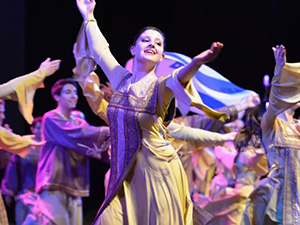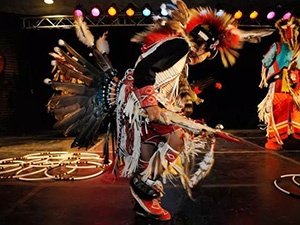
International Education
Table of Contents
A Community of Arts, Culture and Recreation
Internationally renowned ballet![]() , visual art, writers, world-class symphony
, visual art, writers, world-class symphony![]() and outstanding theatre are at the core of Manitoba’s arts and culture scene
and outstanding theatre are at the core of Manitoba’s arts and culture scene![]() .
.
Classical and contemporary music, dance and theatre can be found in major concert centres and small community halls across the province.
Art galleries and exhibits, music and writers’ festivals, architecture and handicrafts are all part of the Manitoba arts tradition.
Canadian Museum of Human Rights
Winnipeg is home to the Canadian Museum of Human Rights![]() , the first national museum outside of Canada’s capital, Ottawa. The museum is located at the Forks, the historical intersection of the Red River and the Assiniboine River; a site which has been treasured by Aboriginals and Manitobans for hundreds of years.
, the first national museum outside of Canada’s capital, Ottawa. The museum is located at the Forks, the historical intersection of the Red River and the Assiniboine River; a site which has been treasured by Aboriginals and Manitobans for hundreds of years.
Assiniboine Park Zoo
The Assiniboine Park Zoo![]() recently opened the Journey to Churchill exhibit
recently opened the Journey to Churchill exhibit![]() , the most comprehensive northern species exhibit of its kind in the world.
, the most comprehensive northern species exhibit of its kind in the world.
Throughout 10-acres, visitors can see a variety of northern animal and plant species. This includes the opportunity to polar bears and seals swimming below the water surface while in the Sea Ice Passage, an underwater viewing tunnel. Arctic foxes, muskoxen, wolves, and snowy owls are found in the Wapusk Lowlands. The exhibit also features the leading edge Aurora Borealis Theatre and interactive Touch Tables.
Sports
Sports fans will enjoy the excitement of our professional and university-level football, hockey and baseball![]() teams. Students can also play these sports and others (soccer, rugby, field hockey, volleyball, track and field) on amateur teams at school or in the community.
teams. Students can also play these sports and others (soccer, rugby, field hockey, volleyball, track and field) on amateur teams at school or in the community.
Hot, relaxing summers, fresh, breezy springs, and crisp, clear autumns have Manitobans hiking, fishing, swimming, cycling, bird watching, golfing, picnicking, playing tennis, canoeing, kayaking, boating and water skiing.
In winter, Manitoba is transformed into a snow-covered wonderland perfect for skating, ice hockey, cross-country and downhill skiing, snowshoeing, snowboarding, dog sledding, ice fishing and snowmobiling.
Manitoba: A Multicultural Society
Citizens from around the world feel at home in Manitoba. We are the most culturally diverse province in Canada, with more than 100 languages spoken.
The majority of Manitobans use English in their daily lives. French is also a key language as Manitoba is home to Canada’s third largest community of French-speaking Canadians.
We are very proud of our multicultural heritage and celebrate our diversity as well as our similarities. The history of Manitoba 's Indigenous people goes back thousands of years. Since the province was established in 1870, Manitoba has welcomed immigrants from every corner of the globe.
Manitobans are known throughout Canada for their friendliness and community spirit. Many of us were once newcomers to the province and we gladly welcome international visitors.
| Language | Population |
|---|---|
| English | 869,900 |
| German | 67,155 |
| French | 42,090 |
| Tagalog (Filipino) | 34,260 |
| Cree | 18,970 |
| Ukrainian | 17,290 |
| Chinese | 13,315 |
| Punjabi | 9,870 |
| Spanish | 8,825 |
| Ojibway | 7,760 |
| Polish | 7,365 |
| Oji-Cree | 6,785 |
| Russian | 6,730 |
| Portuguese | 6,100 |
| Italian | 4,140 |
| Vietnamese | 3,325 |
| Dutch | 3,150 |
| Arabic | 3,015 |
| Korean | 2,795 |
| Other non-official languages | 3,565 |





